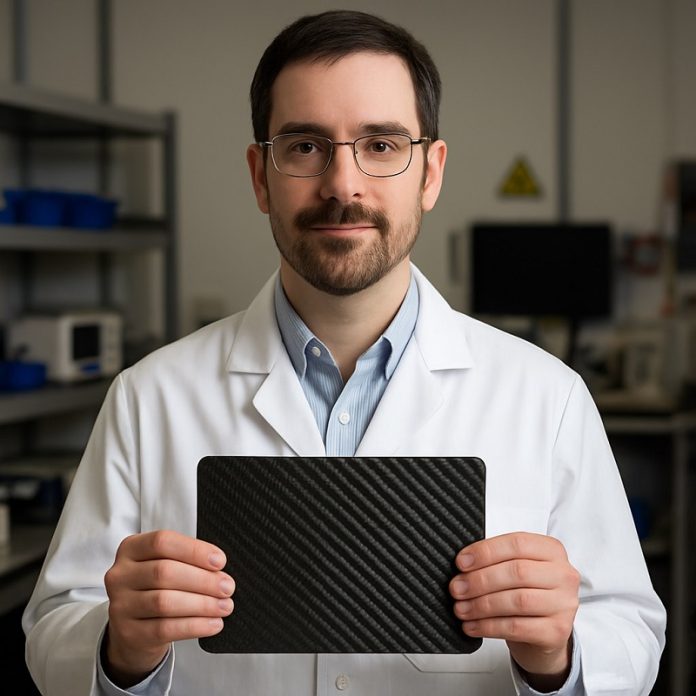
Imagine a car that fixes its dents after a crash or an airplane part that repairs itself mid-flight.
That’s the promise of a remarkable new material being developed by researchers at Texas A&M University and The University of Tulsa—a carbon-fiber reinforced smart plastic that is not only stronger than steel, but also self-healing, shape-shifting, and fully recyclable.
The material, called Aromatic Thermosetting Copolyester (ATSP), is an advanced type of plastic known as a vitrimer.
It combines the flexibility of everyday plastics with the heat resistance and strength of industrial-grade materials.
When strengthened with carbon fibers, ATSP becomes several times stronger than steel while remaining lighter than aluminum.
One of ATSP’s most exciting features is its ability to heal damage on demand. In industries like aerospace, where safety is critical, damaged parts could be restored without replacing them entirely.
“If any part of an airplane suffers damage, you could perform on-demand self-healing,” says Dr. Mohammad Naraghi, lead researcher and professor of aerospace engineering at Texas A&M.
The automotive industry could also see major benefits. Imagine restoring a car’s shape after a collision—improving safety for passengers—without costly replacements. Because ATSP is recyclable, it could also reduce the environmental impact of manufacturing and repair. Unlike traditional plastics, it can be reshaped and reused multiple times without losing its properties.
ATSP’s abilities come from how its chemical bonds work. The material contains bonds that can “reconnect” when heated, allowing it to recover its original shape or seal cracks. Shape recovery and self-healing are part of the same process: in one case, the bonds rearrange within a continuous piece of material; in the other, they bridge a gap like a crack.
To test its limits, the researchers subjected ATSP to a series of stress tests. They applied repeated stretching and bending, followed by heating the material to trigger self-healing. They found that ATSP not only survived hundreds of these cycles but actually became more durable during the process—much like skin that grows tougher after healing.
Even under extreme conditions—heated to 280°C and damaged repeatedly—the material returned to nearly full strength after the first two damage-healing cycles, and still retained about 80% of its strength after five cycles. High-resolution imaging confirmed that the repaired material looked much like its original form, with only minor wear from repeated testing.
Equally impressive, ATSP showed no signs of thermal breakdown during the tests. This means it could perform reliably in demanding environments for long periods, opening doors for use in aircraft, cars, defense equipment, and more.
“This material can evolve and adapt,” Naraghi says. “It’s not just about durability—it’s about creating a new generation of plastics that can last longer, perform better, and be reused again and again.”



